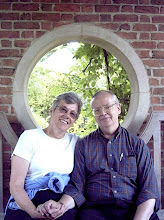• Sacred places as perceptions of reality
• Sacred places as not merely locations but events where all time is eternal time
• Sacred places as sites for re-memberment
• Sacred places as renewed crucibles of consciousness
• Sacred places as encyclopedias of self-knowledge
• Sacred places as time capsules from ourselves to ourselves
• Sacred places as portals to ascent
• Sacred places as geography of the imagination
• Sacred places as centers of reconciliation
• Sacred places as realms of recollection
— T. C. McLuhan, Cathedrals of the Spirit, “Introduction,” p. 8.
The Way of Correspondence
Conscious, interactive landscapes were daily events in the lives of our ancestors. Traditional cultures the world over recognize this reality. The megalith builders of Stonehenge, Avebury, the Great Pyramid, Chaco Canyon, Macho Picchu, Teotihuacan, and Palenque constructed their sanctuaries according to the sacred principles of ancient astronomy and geometry based on the system of correspondence, the core of which was Nature. “The most ancient people,” wrote the Swedish engineer, scientist, and mystic Emanuel Swedenborg, “were celestial men [who] thought from correspondence itself, as the angels do.” Swedenborg defines correspondence as follows: “The whole natural world corresponds to the spiritual world, and not merely the natural world in general, but also every particular of it; and as a consequence every thing in the natural world that springs from the spiritual world is called a correspondence.” Swedenborg’s thinking is congruent with Aboriginal wisdom and Islamic philosophy relating to the world of correlation. For instance, the Gagudju of Arnhem Land in northern Australia know that the maturing of the fiber on the pandanus tree is irrefutable proof of sharks in nearby waters giving birth to their young. The eleventh-century visionary Abu Hamid Muhammad al-Ghazzali has written that “the visible world was made to correspond to the world invisible and there is nothing in this world but is a symbol of something in that world.”
The megalith builders understood that structures they were building were astrophysical sites, points of contact with the greater universes. They are time capsules containing “star mathematics.” The whole thing is very much . . . a beautiful and holy vision,” wrote Thomas Merton of his pilgrimage to Polonnaruwa in Sri Lanka where the great stone Buddhas stand and recline. When the Trappist monk felt strangely inarticulate about his experience of this divine place, an Indian colleague advised Merton: “Those who carved those statues were not ordinary men.”
The power inhering in these ancient monuments was real. The ancient builders were spiritual engineers who knew the way of the heavens and the principles of perennial truths. That sacred knowledge was a portal to a profound realization of the ineradicable connectedness of humankind with Earth, with its own divine essence and the cosmic beyond.
— T. C. McLuhan, Cathedrals of the Spirit, “Introduction,” pp. 14-15.

No comments:
Post a Comment